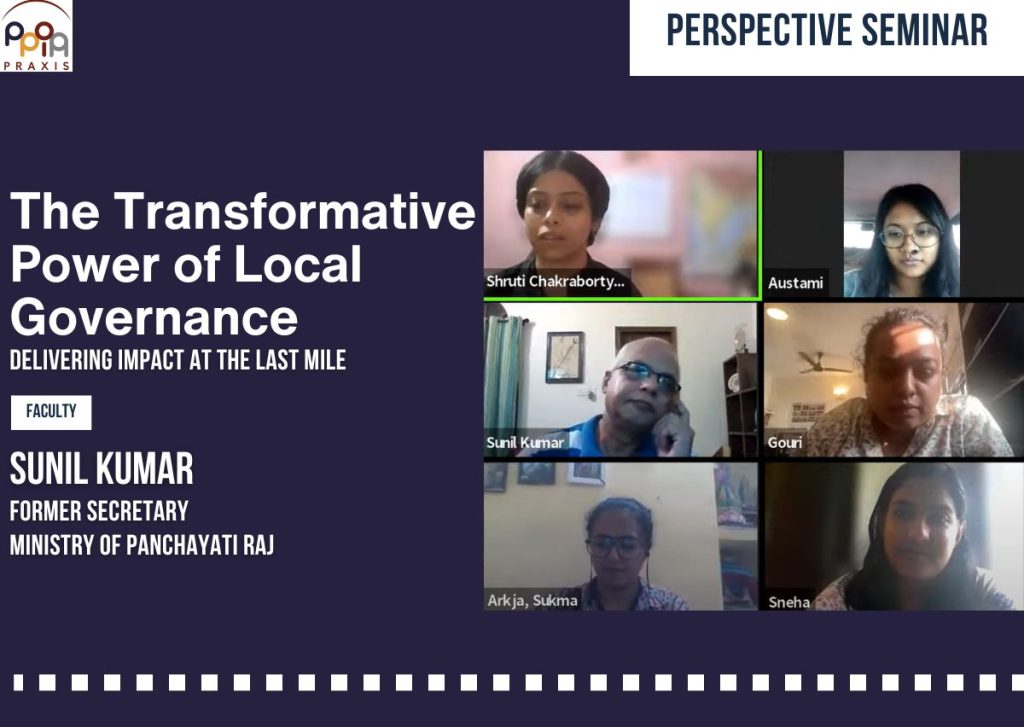According to a 2019 report by the Asian Development Bank, the global urban population has risen dramatically, from 30 percent in 1950 to 55 percent in 2018. In India, satellite data from the Global Human Settlements Layer (GHSL), shows that by 2015, 63 percent of the population was urban.
This rapid urbanisation is significantly unplanned. What this means is there is an ever-growing presence of unplanned structures that arise without legal approval, either on government Indian land or private property, in a disorderly manner. These settlements consist of permanent or semi-permanent and temporary structures, often found near city drains, railway tracks, low-lying areas prone to flooding, or on agricultural land and green belts surrounding the city.
These unplanned settlements are considered illegal and denied formal services of water supply and sanitation, resulting in outbreaks of diseases. Studies on India’s water-borne diseases show that between 400,000 and 500,000 children aged under five years die each year from diarrhoea, due to a failure to improve personal and home hygiene as a factor.
The present conditions have put our established principles of local-governance into question. Can rural and urban be neatly separated when peri-urban areas are rapidly growing? What are the possibilities of ensuring basic services like health and hygiene reach the last mile when unplanned growth is as colossal? What should be the local government’s role in all this? If it is local government that ensures basic services trickle down, can they be reduced to the ‘third tier’ of government?
- Historical Evolution of Local Self-Government in India
- Local government is a possible direct democracy and good governance
- Design flaws of Local-Self-Government
The origin of local government can be traced to the constituent assembly debates. Here, members of the Gandhian school of thought advocated for an empowered local government or Panchayat, which it is the basis of governance. In contention to this, was the view that this model of decentralisation would put India’s integrity at risk, given the turbulent political climate, post-partition.
Hence, the presence of local government in the Indian Constitution was not found mentioned beyond Article 14. It was during the 1952 Community Development Programmes, [1]the Balwant Rai Mehta Committee Report, the Ashok Mehta Committee of 1978, and lastly, in 1993 that LSG became a part of the Indian Constitution following the 73rd and 74th Amendment Act[2].
Despite, its late emergence in the Indian polity, Local Self-Government (LSG) is considered an essential pre-condition for developed democracies. An example of this is found in the classic text, of Democracy in America by Alexis de Tocqueville, ( 1831) where the author argued that local self-government was a fundamental part of American democracy. [3]
It can be argued that LSG, in addition to democracy and federalism, is a fundamental feature of the Indian constitution.
It has to be noted that purely in terms of some elected representatives, LSG is more democratic, in terms of its elected numbers, as compared to legislative assemblies. It is the face of the government to the people of the country and is close to the ideal of direct democracy.
The decentralisation of power, an essential feature of a strong LSG, is critical for last mile service, something that the development of information technology can not merely attain.
Borrowing from the subsidiarity principle argued by prominent economists, work should be done at the level that is closest to the people. Local government, in this sense, embodies this principle of subsidiarity. During the pandemic, for instance, it was LSG that was looking after migrants when they went back to their villages.
Thus, it is in the institution of LSG that the pillars of good governance including respect for human rights, inclusive citizenship, responsiveness, accountability, and transparency can be strengthened.
Despite its immense transformative potential, LSG has certain design flaws that must be attended to:
- Differentiation between the 73rd and 74th Amendments: From the citizen’s perspective, the rural-urban divide is administrative rather than a real bifurcation. Different studies indicate, India is more urban than rural, but there are areas that are governed as Panchayat. This rapid urbanisation is essentially unplanned growth leading to situations where panchayats are governing areas which they are unfit to govern.
- Concentration of Power: Gram Sabha remains a weak institution. Ideally, Gram Sabha has to be the equivalent of Vidhan Sabha at the state level, and Lok Sabha at the national level. What this means is that the functioning of Gram Sabha has to be made as rigorously legislative as the mentioned institutions. It also has to fulfill its function of social audit, where Sarpanch and public administrators are held accountable by an electorate. Thus, it is through a strong Gram Sabha, that elected Panchayat representatives and local bureaucracy can be held accountable to the people. The argument of Gram Sabha playing a legislative function has its origin in Jay Prakash Narayan’s seminal essay, ‘A Plea for the Reconstruction of the Indian Polity’, [4], where he advocated for strong Local self-government, and in the letters of Babagouda Patil Minister of State (Independent Charge), who argued Gram Sabha, has to be seen as the legislature and Panchayat as Executive
- A multiplicity of Para-statal agencies hinders the delivery of services: Local governments are perceived as implementing agencies instead of decision-making bodies. This has to be changed, for citizens to play empowering roles, and take ownership of policies. An example of this is found in the implementation of Sustainable Development Goals (SDG), a task delegated to para-statal bodies. Instead, it is local governments that have to potential to achieve these, as it is the localisation of the goals that is needed for these goals to be achieved. For eg: in poverty reduction- the Panchayat’s role should not restricted to a selection of beneficiaries but also the responsibility to reduce poverty.
Key Takeaways:
1. It is time for practitioners, academics, government, and non-government officials to come together to communicate to people the governance problems, and issues at hand. We have to think of citizens as capable, intelligent, and responsible.
2. Local government is irreplaceable, we need to work with panchayat and Gram Sabhas and we need to work with them tirelessly and persistently to make them capable.
[1] https://egyankosh.ac.in/bitstream/123456789/59006/1/Unit5.pdf
[2] https://www.iipa.org.in/upload/IPG_panchayti%20raj.pdf
[3] https://archive.org/details/democracyiname01tocq
[4] https://www.india-seminar.com/2001/506/506%20extract.htm





